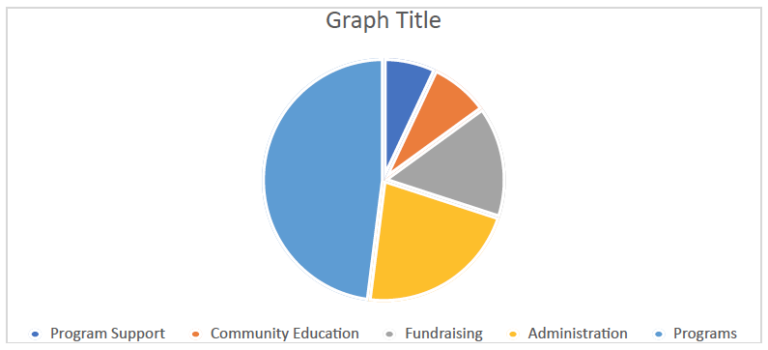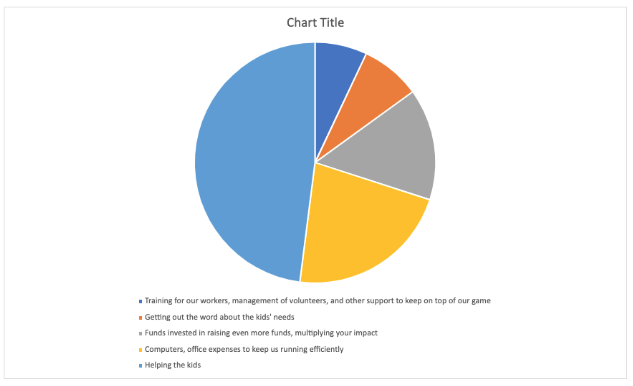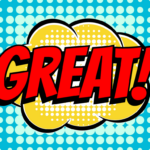There’s a monster stalking the halls of nonprofit organizations around the world. Every day it smashes, tears, and crushes organizations’ ability to do their mission.
The monster is an attitude: The less a charity spends on overhead, the better!
It’s often spread by politicians and the media, who say that money spent on salaries, equipment, administration, and fundraising is a necessary evil at best, and some kind of scam at worst.
This line of thinking says nonprofit organizations should operate under constraints that would quickly bankrupt any business: They are supposed to do excellent work while skimping on all the things that support excellence: Good management, proper equipment, great leadership, and relevant marketing.
Apparently, that stuff should just happen by magic.
Which, of course, it doesn’t.
You get what you pay for.
This attitude, this destructive monster that insists overhead is bad, is probably the main reason charities don’t have the impact they could have. In a world as badly in need of help and repair as this one, the last thing we need is for charities to be operating with such a damaging limitation!
Here’s a thought experiment that might help you beat back the monster:
Imagine there are two nonprofit organizations:
Nonprofit A spends 20% of its income on fundraising.
Nonprofit B spends 40% of its income on fundraising.
Which one of them is “better” at accomplishing its mission?
The monster and its friends in politics and the media would declare that Nonprofit A is more efficient. It’s obviously better! Shame on Nonprofit B for its spendthrift ways.
But let’s look a little closer: Nonprofit A just completed a fundraising campaign that cost them $400,000. It went well, achieving a 5:1 return on investment, or $2 million, for a net of $1.6 million.
Nonprofit B did a similar campaign. But they spent $2 million on it. Their campaign also did well, they achieved an ROI of 2.5:1, which was $5 million. Net revenue: $3 million.
Which organization did better: The efficient organization that kept cost down, or the “wasteful” organization that brought in nearly twice as much net revenue to help make the world a better place?
That’s a value judgement, but most people would say raising more money to make the world better is the more effective organization.
Nonprofits should be careful about their spending, but spending as little on “overhead” as possible is a self-limiting approach. Each of us should spend the right amount on good overhead to maximize our impact.
And don’t apologize for your overhead! It’s not a necessary evil. It’s a necessary good.
One of the things that influences how politicians and the media – as well as we and our donors — think about overhead are those expense pie charts. Here’s the common way pie charts display nonprofit spending:
Traditional nonprofit expenditure pie chart

By giving expense areas bureaucratic names with no explanation, this pie chart helps support the “overhead is bad” myth. Would-be donors see large slices of activities they don’t care about – and may perceive it as “wasted” money. Even labelling their core program activities with the generic term “program” is likely to be misunderstood by readers who may think this organization isn’t doing anything important!
Smarter nonprofit expenditure pie chart

This chart “sells” every slice of the pie. It emphasizes the truth that all the activities are necessary, important, and worth supporting. This can help donors see all the important things we do as valid.
Something as simple as the labels we use on pie charts can help us tell a better story, and even change the way we think about our costs. We owe it to our great causes to fight the myth that overhead equals waste, and to replace it with the better truth that we are about maximizing impact. That’s an important way we can really change the world for the better!
Reserve your seat at the game-changing online workshop, The Hidden Treasure of Fundraising. This ground-breaking session will show you how it “takes money to make money” – and how to help your boss believe that! It’s a $199 value, but with a long-term value that could climb into the millions for you! Many times and dates to fit your schedule, but it’s filling up fast!
Related Blog Posts:











1 Comment. Leave new
This is quite possibly the biggest challenge facing nonprofit sector. It ultimately undermines everything we’re supposed to accomplish – from mission delivery to staffing to growth and solutions. Spending on overhead IS spending on mission. I wish there was a magic wand we could wave to have Boards and funders see this as a truth. I applaud this article and your pie chart!